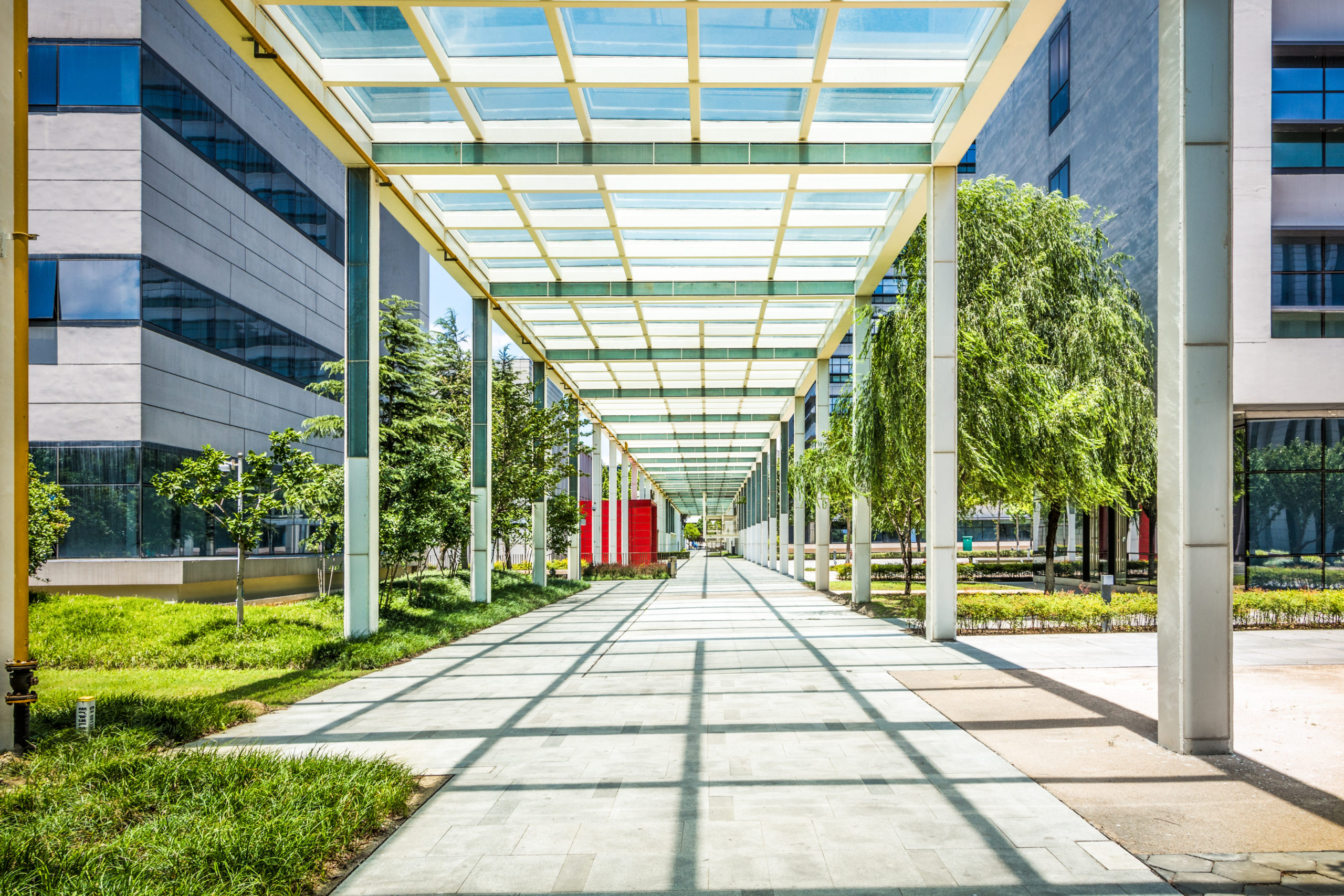News • Jul 23 2024

insight • Apr 20 2022

insight • Apr 20 2022
We know that for the last ten years or so, patient satisfaction has been directly tied to medical reimbursements. Hospitals and healthcare facilities consistently rate high on patient satisfaction surveys by delivering a high-quality patient experience.
Patients are rating and scoring their experience based on the quality of care they received and also on how they felt while they were there. It is not enough for healthcare design to simply be efficient. It must also seamlessly integrate with the clinical side of the house to ensure an exceptional patient (or visitor or employee) experience. By examining healthcare design under a microscope, we can gain a deeper understanding of just how intimately the design of a healthcare facility can affect the patient experience.
Before we even enter the hospital or healthcare facility, consider the design of the parking lot — from the perspective of each of your audiences: employees, patients, visitors, vendors. What’s most important to them? Certainly, safety and efficiency are the top priorities. Clear signage avoids any confusion and makes the arrival pleasant and stress-free.
Efficient healthcare design takes into account the needs of patients who often arrive to hospitals or care facilities scared or anxious about their health. It also takes into account the needs of employees, especially critical employees such as on-call surgeons, doctors, nurses, or others, who may need to get into the facility quickly. Parking should be well lit, well marked, and ample to meet the needs of patients and employees efficiently and courteously.
Another consideration for making healthcare design more efficient occurs when people first walk through the door: can they find where they are going quickly or is the environment overwhelming and confusing?
Many hospitals and healthcare facilities have welcome desks to assist patients or visitors. Printed maps are excellent tools; however, one of the best healthcare design tactics is to use the facility as the map.
Christiana Care Hospital in Delaware uses a beach theme throughout their hospital. When volunteers give directions, they point to the floor which changes color and texture — from sandy beach in the lobby to different shades of blue leading to x-ray rooms or mammography suites. The effect is a soothing, easy-to-follow system that gives patients and their families peace of mind. Good, efficient design is a powerful tool in creating an exceptional patient experience.
Years ago, it was common for hospitals to have a small chapel or prayer room where people could go if they were worried about a loved one or needed to take a moment to themselves. It was also a place where doctors and nurses and others on the care team would go after or during a particularly difficult shift. Now, we realize this may be an awkward encounter and it may not enable either party to get the solace and undisturbed time they desire.
Good healthcare design is mindful that employees and patients and their families often need separate spaces. Whether it’s a quiet place to decompress or even someplace as seemingly benign as the hospital cafeteria. It’s important that the design of a facility support the needs of all of its constituencies without compromising privacy.
Hospitals and healthcare facilities that care for children have a special opportunity to infuse efficiency with creativity in their healthcare design. One of the best ways to create an effective healthcare design in this kind of care facility is to physically lower yourself to the eye level of a child and literally see things from their perspective.
UCSF Benioff Children’s Hospital in San Francisco offers high-tech rooms equipped with Smart TVs, interactive walls that change color based on what the patient chooses on their remote, and virtual scenery (since part of the hospital overlooks the parking lot). All of these design elements may seem superfluous and perhaps even unnecessary, but they serve a greater purpose. Imagine how scared and nervous a child is when it’s time to take medication or even just for a vitals check? Changing the wall color or pulling up a fun scene on the interactive wall can elicit a smile, which can lower blood pressure, lessen anxiety, and make the clinical procedure more efficient.
Consider the outside space at your facility. Is there a garden or play area or meditation spot for anyone to enjoy? Is it easy to navigate or are there hard lines and right corner angles that make it difficult to enjoy? Outdoor spaces, in climates where it is possible, can serve as a positive enhancement to the patient experience.
Speaking of outdoor spaces, have you ever noticed people will veer off a sidewalk and create their own path over grass or dirt to get to their destination? Why? Well, sidewalks and pathways aren’t always designed with efficiency in mind. It’s tempting to take a shortcut. If the design isn’t set up in the most efficient way, people will make their own path.
Efficient healthcare design is a critical component to creating an exceptional experience for patients, visitors, families, and other customers. Better patient satisfaction scores mean greater customer loyalty and higher medical reimbursements. And it can be the key differentiator that sets your hospital or healthcare facility apart from others.
News • Jul 23 2024
News • Jul 11 2024
Generis Collective can be your single point of contact for all your property development needs- providing leadership across every stage of your project and managing all moving parts. Let’s connect and start transforming your guest experience.